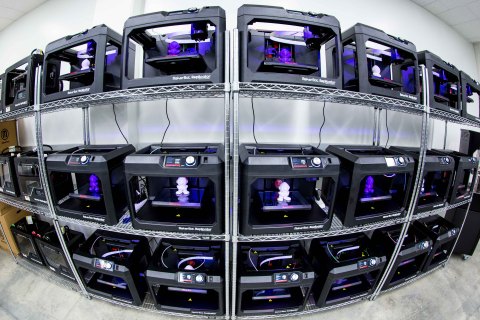
MakerBot’s Innovation Center is a fascinating product that carries all sorts of implications for the industry.
As we described in our previous post, “The Economics of MakerBot’s Innovation Center”, this unusual product transforms a group of MakerBot 3D printers into a coordinated operational cluster of machines providing high-capacity and reliable 3D printing services at low cost.
We considered some of the implications of this product, which, we believe, is unique among 3D printer vendors. Others market high-priced, large industrial 3D printers or smaller desktop units. None seem to offer similar clustering features, at least with the operational characteristics MakerBot has.
The first implication is a threat to industrial 3D printer makers, who may lose some business. Some clients may choose to install a cluster with cheaper operational characteristics and potentially more capacity than a single large industrial 3D printer. At first, effects could be seen for basic ABS prints only, as specialty materials remain the preserve of industrial machines.
Ironically, the 3D printer manufacturer that might be most affected by this effect is Stratasys, who just happens to be the owner of MakerBot. Now their acquisition of the personal 3D printer startup makes more sense, doesn’t it?
No other desktop 3D printer manufacturer offers anything like this, so expect to see the more advanced companies attempt a similar strategy, else they’ll be leaving a large market segment to MakerBot. Existing hardware may have to be adapted slightly, to include features necessary for successful cluster operation: networking, camera and more detailed machine status. Combine those with some software and you might have the beginnings of a clustering system.

